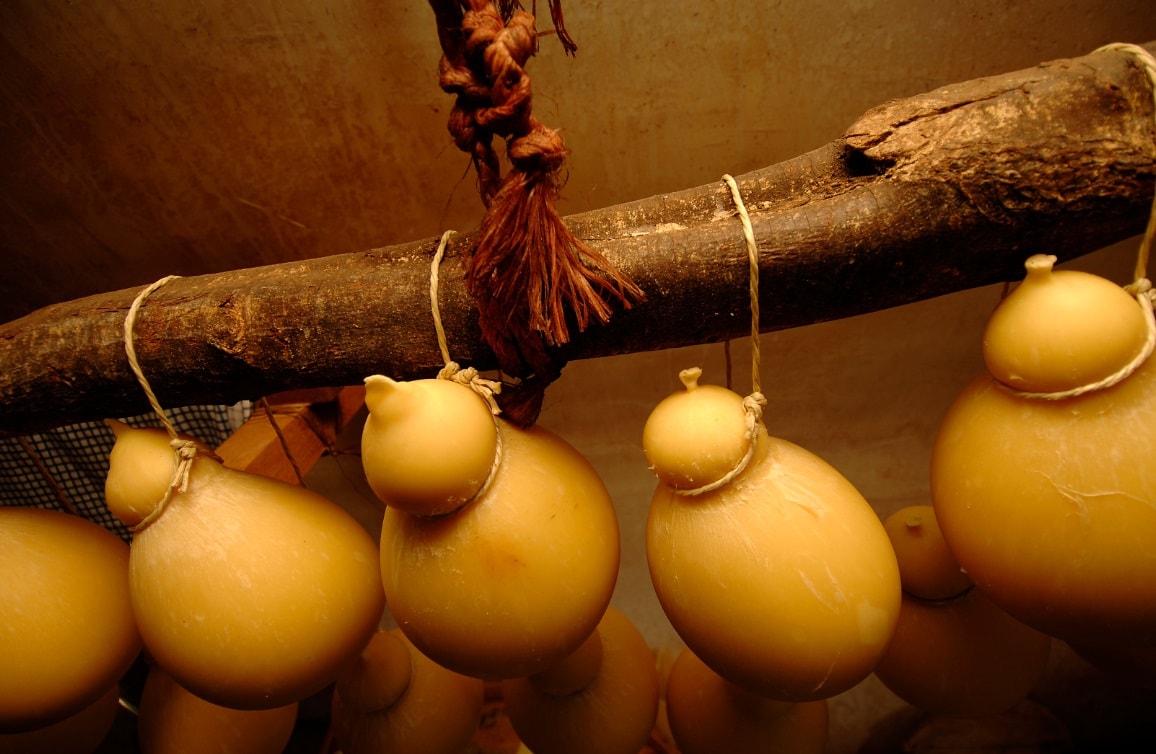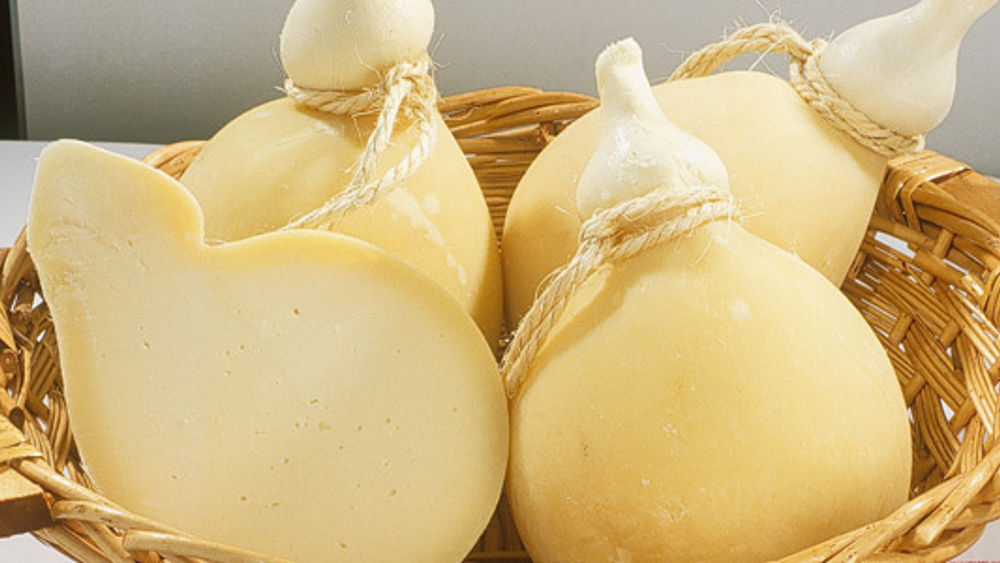Caciocavallo Cheese.
The caciocavallo cheese is a semi-hard spun paste cheese, made from cow’s milk. The shape is a pear with the head and the weight varying from 1 to 3 kg.
Crust is thin, smooth, pale yellow color marked. The paste is homogeneous, with small holes, and white or straw yellow color more intense towards the outside. The flavor, influenced by the period of maturation, can range from very mild to strong.
Product category
Cheeses
Other naming
–
Production origin area
Puglia e Basilicata (Italy)
Production process
After filtration, the raw cow’s milk is acidified by addition of natural whey, resulting from previous operations.
The coagulation, after heating the milk to a temperature of ca. 40 ° C, is obtained by the addition of liquid bovine rennet (ca. 25 ml per 100 kg).
The manual breaking of the curd by wooden sticks is useful to obtain granules to the size of a grain of rice.
The curd rests in whey for a time of ca. 3 h, followed by cutting into loaves and a subsequent rest of ca. 20 min.
The loaves are further cut into strips to facilitate the spinning is performed at ca. 80 ° C in buttermilk. With the spinning operation, the curd is molded in the classic pear shaped head and then tied with nylon thread or natural fiber.
The individual forms are placed in cold water for times as a function of variable dimensions, up to firming.
Salting takes place in brine at a temperature of 15-20 ° C. The shapes remain immersed in the brine for a time equal to ca. 8-9 h per kg of product.
Depending on the type, the maturation is continued for a period of 2-12 months at a temperature of ca. 15 ° C..
Production period
All year long
History and tradition
The name Caciocavallo cheese originated from the cheese seasoning mode of cheeses tied together, riding on a stick.
A particular type of Caciocavallo Caciocavallo is the Caciocavallo Podolico, the location of the podolian animals has focused almost exclusively on the Garganico Promontory where water is scarce and survival is difficult. The breed podolica supposed to have been domesticated in the Middle East in the fourth millennium BC.
description from Atlas of Typical Products from Puglia – First Edition – October 2006
images by cheesemaking.com



